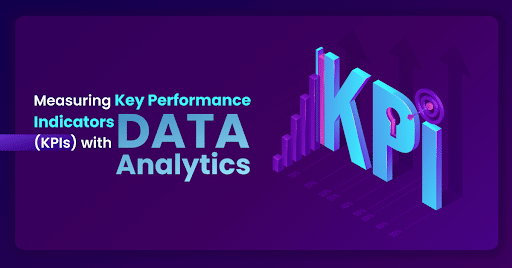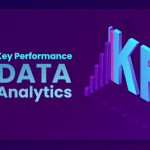Key Performance Indicators or KPIs are crucial for any organization to measure success and monitor progress towards important goals. Selecting the right KPIs and tracking them regularly can help businesses understand what is working and what needs improvement. In today’s data-driven world, data analytics has become an important tool for measuring KPIs. Through data analytics techniques like data mining and business intelligence, organizations can gain valuable insights from their data to analyze important KPIs like customer satisfaction, sales revenue, costs, etc. A Online Data Analytics Course can help professionals learn these techniques and skills to better measure KPIs.
Alt Text- > Measuring Key Performance Indicators (KPIs) with Data Analytics
Table of Contents:
- Introduction to KPIs and Data Analytics
- Understanding Key Performance Indicators (KPIs)
- Importance of Data Analytics in KPI Measurement
- Selecting the Right KPIs for Your Business
- Data Collection and Preparation for KPI Analysis
- Best Practices for Effective KPI Monitoring and Reporting
- Conclusion
Introduction to KPIs and Data Analytics
Key Performance Indicators or KPIs are important metrics that help businesses measure how well they are doing against their goals. Data analytics is the process of examining large amounts of data to uncover hidden patterns, correlations, and insights. With data analytics, businesses can analyze their KPIs to understand what is working well and what needs improvement. They can use tools like dashboards to regularly monitor KPIs and spot trends over time. Data analytics helps make informed decisions by providing insights into KPIs. This helps businesses enhance their processes, products, and services based on data and facts rather than just assumptions.
Understanding Key Performance Indicators (KPIs)
Key Performance Indicators or KPIs are specific metrics that are used to measure important aspects of a business. They help businesses understand how well they are achieving their goals and objectives. Some common examples of KPIs include customer satisfaction, sales revenue, profit margins, number of website visits, lead generation, and customer retention rates. KPIs should be measurable, actionable, and linked to business strategy.
They need to be carefully selected based on the company’s goals. Multiple KPIs together provide a holistic view of business performance from different dimensions like financial, customer, operational, and growth metrics. KPIs are monitored regularly at different levels like daily, weekly, or monthly to track progress over time. This helps businesses take timely actions to improve performance.
Importance of Data Analytics in KPI Measurement
Data analytics plays a crucial role in effective KPI measurement. With large amounts of data available from various sources like web analytics, CRM systems, and ERP databases, businesses can gain valuable insights into their KPIs using data analytics tools and techniques. This helps provide a more objective, fact-based understanding of KPI performance over subjective assumptions.
Data analytics also helps identify trends, patterns, and correlations that may not be visible otherwise. For example, it can reveal how marketing campaigns impact website traffic or sales. Businesses can assess what customer or product segments are driving the most value. Predictive analytics based on past KPI data can help forecast future trends too. Data analytics facilitates informed decision-making. It helps businesses take prompt actions to improve underperforming KPIs and scale up what’s working well. This ultimately leads to enhanced business outcomes.
Selecting the Right KPIs for Your Business
It is important for businesses to carefully select the right KPIs that are relevant to their specific industry and goals. KPIs should be chosen based on what aspects of business performance matter the most. For example, a manufacturing company may track production output and quality defects as key metrics. Whereas a software company’s important KPIs could be number of downloads, monthly active users or customer retention. KPIs must also align with a company’s business strategy and objectives.
Generic industry KPIs won’t work if they are not tied to what a business wants to achieve. It is also essential to keep the number of KPIs limited otherwise it becomes difficult to focus efforts. The selected KPIs need to be clearly defined and easily understandable. Data required to measure KPIs should be readily available or possible to collect.
Data Collection and Preparation for KPI Analysis
Before analyzing KPIs using data analytics, the right data needs to be collected and prepared. Data can come from various operational systems like ERP, CRM, marketing automation platforms, or website analytics tools. It is important to integrate these different data sources. The data collected should include metrics defined as KPIs as well as related attributes that can provide useful context for analysis. Raw data needs cleaning to remove inconsistencies, duplicates, and errors. It must then be organized into a structured format for analysis.
Tools like SQL can help extract, transform, and load the data into a single database or data warehouse. Proper dimensions and granularity are essential for meaningful insights. Sometimes additional data from third parties may be required. With clean and integrated data, businesses can leverage analytics to generate actionable KPI reports.
Best Practices for Effective KPI Monitoring and Reporting
There are some good practices to follow for effective KPI monitoring and reporting. KPIs should be measured regularly at short intervals like weekly or monthly. Track performance over time using charts and dashboards for quick visual analysis of trends. Set targets and thresholds for each KPI to determine if they are in control or need attention. Share KPI reports with relevant teams and management for review. Drill-down analysis may be required to find root causes if targets are missed. Take corrective actions in a timely way based on data insights. Keep reports simple and focused on the most important metrics. Review and refine KPIs periodically according to changing business needs.
Conclusion
In conclusion, measuring KPIs with data analytics provides businesses with a powerful way to gain actionable insights into their performance. Selecting the right KPIs aligned to goals and collecting relevant data from different sources are initial steps. With data preparation and analytical tools, businesses can understand trends, correlations, and patterns related to their key metrics. This helps them make proactive decisions to improve KPIs by addressing root causes. Effective monitoring and reporting of KPIs further aid management and course corrections. When done systematically, data-driven KPI analysis can help businesses enhance processes, products, and customer experience and ultimately boost growth and profits over the long term. Additionally, professionals looking to enhance their skills in data analytics and utilize it effectively for KPI measurement and analysis can benefit from enrolling in a Data Analytics Course, which provides comprehensive training on data collection, preparation, analysis, and interpretation techniques.









